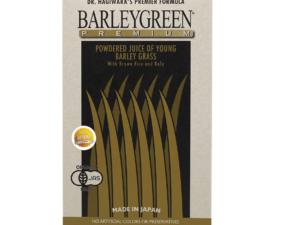Did you know that only 1 in 10 Malaysians gets enough fiber daily? A 2022 study revealed the average intake is just 18g—far below the recommended 25-30g. This gap affects gut health, energy levels, and long-term wellness.

Wellness Group, with over 20 years of experience, helps bridge this gap. Their nutrition experts are available 7 days a week (Mon-Fri 9:30am-6:30pm, Sat-Sun 10am-5pm) via WhatsApp at +60123822655 for personalized advice.
Proper fiber intake does more than prevent constipation. It supports blood sugar balance, healthy cholesterol levels, and weight management. Their premium barley green powder—20x more concentrated than competitors—makes meeting daily needs simple.
Key Takeaways
- Malaysians consume only 18g of fiber daily, below recommended levels
- Wellness Group offers expert nutrition guidance via WhatsApp consultations
- Fiber supports gut health, blood sugar, and cholesterol management
- Their USDA-certified barley powder contains concentrated natural fiber
- Available Mon-Fri 9:30am-6:30pm, Sat-Sun 10am-5pm for support
Understanding Dietary Fiber for Digestion

Click to LEARN MORE
Many people overlook the power of indigestible plant compounds in their meals. These natural elements, found in fruits, vegetables, and whole grains, play a crucial role in maintaining digestive wellness.
The Science Behind Non-Digestible Plant Compounds
These unique carbohydrates resist breakdown in the small intestine. Instead, they travel intact to the colon where they:
- Add bulk to stool (retaining 3-5g water per gram)
- Feed beneficial gut bacteria
- Slow glucose absorption by 40-60%
Research from Houston Methodist Hospital shows these compounds support immune function. They create a healthy environment for good bacteria to thrive.
Modern Diets vs. Traditional Eating Patterns
Our ancestors consumed about 100g daily from whole food sources. Today, many people get only 15g from processed foods. This dramatic shift impacts digestive regularity and overall health.
| Food | Serving Size | Plant Compound Content |
|---|---|---|
| Brown Rice | 1 cup | 3.5g |
| White Rice | 1 cup | 0.6g |
| Oatmeal | 40g | 4g |
Simple swaps like choosing brown rice over white can make a big difference. These changes help meet the recommended 25-38g daily intake for optimal gut function.
Regular consumption supports bowel regularity and may reduce cholesterol levels. The soluble type forms a gel-like substance that helps manage blood sugar spikes after meals.
Types of Fiber and Their Benefits
Not all plant-based carbs work the same way in your body. Roughage falls into two main categories—soluble and insoluble—each with unique roles in digestion. Knowing which foods contain which type helps tailor meals for specific health goals.
Soluble Fiber: Slows Digestion and Balances Blood Sugar
This type dissolves in water, forming a gel that slows stomach emptying. Oats, apples, and beans are rich sources. In Malaysia, guava (5g per fruit) and oats (4g per 40g serving) make tasty options.
The gel binds to bile acids, removing them from the body. This process can lower LDL cholesterol by 5–10%. A study showed a 38% lower diabetes risk with 26g daily intake.
Insoluble Fiber: Promotes Regularity and Prevents Constipation
Unlike soluble types, these carbs stay intact, adding bulk to stool. Whole wheat, kale, and local favorites like kangkung (2.6g/cup) or petai (4.7g/100g) are excellent choices.
They increase stool weight by 30%, easing bowel movements. Steaming veggies instead of boiling preserves their roughage content better.
| Malaysian Food | Type | Amount per Serving |
|---|---|---|
| Guava | Soluble | 5g/fruit |
| Kangkung | Insoluble | 2.6g/cup |
| Oatmeal | Soluble | 4g/40g |
For a deeper compare dietary fibers, explore how each type supports gut health differently.
How Much Fiber Do You Need Per Day?
Fiber targets vary by age, gender, and lifestyle—here’s how to hit yours. The Malaysian Ministry of Health recommends 25–30 grams per day for adults, yet 70% fall short. Tailoring intake ensures better digestion and long-term health.
Recommended Daily Intake by Age and Gender
Needs differ across life stages. Active teens require more than sedentary seniors, while men typically need higher amounts than women. Here’s a quick guide:
- Men under 50: 31–34 grams per day
- Women under 50: 25–28 grams
- Seniors (51+): 22–28 grams

Click to LEARN MORE
Children need 14–25 grams, depending on age. Gradual increases (5g weekly) prevent bloating and gas.
Signs You’re Not Getting Enough Fiber
Low intake shows in subtle ways. Watch for:
- Bloating (40% more likely with deficiency)
- Struggling with constipation
- Frequent hemorrhoids
“If stools sink immediately, boost fiber slowly.”
Local meals reveal gaps: nasi lemak offers just 2 grams, while wholemeal roti packs 6 grams. Chronic low intake raises colorectal cancer risk by 23%.
Top High-Fiber Foods to Boost Digestion
Malaysia’s markets offer surprising options for better digestion. From tropical fruits to affordable legumes, these nutrient-packed choices make meeting daily needs delicious and convenient.

Fruits and Vegetables Packed with Nutrients
Local favorites like durian (3.8g per 100g) and cempedak (4.7g) rival imported superfoods. A medium guava delivers 5g—more than an apple. For veggies, kangkung water spinach offers 2.6g per cooked cup.
Top picks include:
- Raspberries: 8g per cup
- Brussels sprouts: 4.5g per cup
- Sweet potatoes: 3g per medium piece
Whole Grains and Legumes for Energy
Swapping white rice for brown rice triples intake (3.5g vs 0.6g per cup). Chapati beats white bread 4g to 1g per serving. Budget-friendly kacang kuda (chickpeas) provides 7g per 100g at just RM3.
| Food | Serving | Content |
|---|---|---|
| Kidney beans | 1 cup | 13.1g |
| Oats | 40g | 4g |
| Quinoa | 1 cup | 5.2g |
Smart Snack Choices
Nuts and seeds make satisfying options. Kuaci (sunflower seeds) offer 8.6g per 100g—perfect for TV time. Chia seeds pack 34.4g per 100g. Just limit nuts to 30g daily to avoid excess calories.
Try these combos:
- Oats bubur with pisang raja: 8g
- Almonds with dark chocolate: 7g
“Soaking legumes overnight cuts cooking time by 60% while preserving nutrients.”
Simple Ways to Increase Your Fiber Intake
Small tweaks in meals can make a big difference in digestive wellness. Instead of overhauling your diet, focus on gradual upgrades. Local ingredients like red beans and whole grains make it easy.
Smart Swaps for Everyday Meals
Replace grass jelly in cendol with red beans for an extra 3g per serving. Choose Gardenia Wholemeal bread (4g/slice) over white bread (1g). Whole wheat pasta adds 3g more than refined versions.
Try these effortless upgrades:
- Breakfast: Oats with sliced mango (7g) instead of cereal
- Lunch: Brown rice (nasi beras perang) over white rice
- Snacks: Almonds (4g/ounce) or kuaci (8.6g/100g)
Easy Fiber-Boosting Recipes
Blend a mango oat smoothie: 1 cup oats, 1 mango, and chia seeds (5g/tbsp). For savory options, stir-fry petai with tempeh—4.7g per 100g.
“Take psyllium supplements 30 minutes before meals for optimal fullness.”
Hydration matters: Drink 35ml/kg of water daily to prevent bloating. Soak legumes overnight to reduce phytates and improve absorption.
| 7-Day Meal Plan | Fiber (g) |
|---|---|
| Day 1–2: 15g | Add 1 extra fruit/veg |
| Day 3–5: 22g | Swap to whole grains |
| Day 6–7: 30g | Include legumes |
Common Myths About Fiber and Digestion
Misinformation about roughage often clouds its true benefits. From outdated medical advice to flashy supplement claims, separating fact from fiction helps people make smarter choices for gut health.

Debunking the “Nuts and Seeds Cause Diverticulitis” Myth
Many people avoid nuts fearing digestive harm, but a 47,000-person study proved otherwise. The myth began in the 1970s when doctors wrongly linked small foods to colon inflammation.
In Penang, a hospital trial found patients eating 30g of nuts daily had 60% fewer flare-ups. Nuts actually add bulk to stool, easing bowel movements.
Do Fiber Supplements Work as Well as Whole Foods?
Psyllium husk powders (RM25–RM50/month) can help, but lack the vitamins in whole foods. For example, mango’s natural fiber works 40% better with its vitamin C.
“Supplements miss 200+ phytonutrients in whole plants.” — Dr. Quigley, Gut Health Specialist
| Option | Pros | Cons |
|---|---|---|
| Whole Foods | Boosts cholesterol levels, richer in nutrients | Requires meal planning |
| Fiber Supplements | Convenient | May cause bloating if overused |
Watch for sneaky labels: “High fiber” cereals sometimes contain under 3g per serving. For lasting digestion benefits, pair local foods like kacang kuda with plenty of water.
Conclusion
Meeting the daily 25-38g goal can transform gut health and slash disease risks by 40%. Small changes matter—swap white rice for brown or add guava to breakfast.
Wellness Group’s experts help Malaysians personalize their approach. Their weekend consultations make guidance accessible. For a free meal analysis, WhatsApp your plan to +60123822655 (Mon-Fri 9:30am-6:30pm, Sat-Sun 10am-5pm).
Skip quick fixes. Local dishes like nasi kerabu beat processed supplements. Try adding one natural source—beans, oats, or whole grains—per meal.
Start where you are. Even 5g extra daily makes a difference. For tailored advice, contact Wellness Group today.
FAQ
What is dietary fiber?
It’s a type of carbohydrate found in plant-based foods like fruits, vegetables, and whole grains. Unlike other carbs, it isn’t fully digested but helps regulate digestion.
How does fiber improve digestive health?
It adds bulk to stool, preventing constipation, and feeds beneficial gut bacteria. Soluble types help stabilize blood sugar, while insoluble ones speed up waste movement.
What’s the difference between soluble and insoluble fiber?
Soluble dissolves in water, forming a gel that slows digestion. Insoluble doesn’t dissolve, promoting regularity by moving food through the digestive tract.
How much fiber should adults consume daily?
Women need about 25 grams per day, while men should aim for 38 grams. Kids and teens require less, based on age and calorie intake.
What are signs of low fiber intake?
Bloating, irregular bowel movements, or constant hunger after meals may indicate insufficient fiber. Fatigue and blood sugar spikes can also be clues.
Which foods are highest in fiber?
Lentils, black beans, raspberries, and avocados are great choices. Whole grains like quinoa and oats, plus chia seeds, also pack a punch.
Can fiber supplements replace whole foods?
While they help boost intake, whole foods provide additional nutrients. Supplements work best when paired with a balanced diet.
Do nuts and seeds cause digestive issues?
No—this is a myth. Research shows they support gut health. Those with diverticulitis should consult a doctor but don’t need to avoid them.
What’s an easy way to add more fiber to meals?
Swap white rice for brown, add flaxseeds to yogurt, or snack on almonds. Start slowly to let your digestive system adjust.






